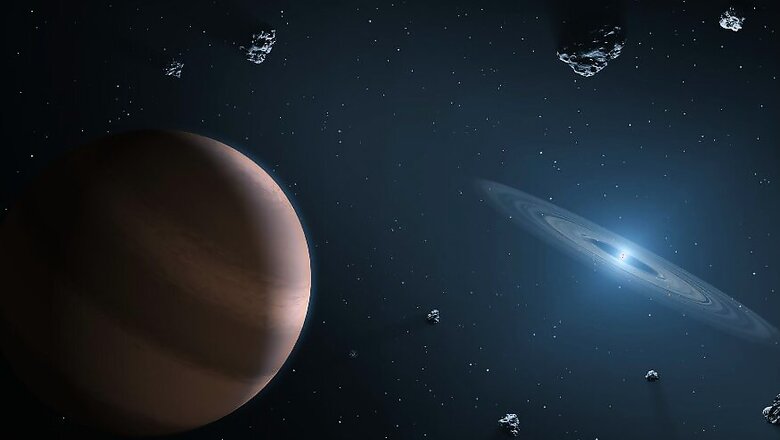
views
While discovering new stars with multiple planets orbiting around them is not a new phenomenon, astronomers recently discovered a six-planet system orbiting the star HD 158259, which is 88 light-years away from Earth. The star, which has been observed using the SOPHIE spectrograph and the TESS exoplanet-hunting space telescope for seven years, is about the same mass and a little larger than the Sun.
This star is orbited by a 'super Earth' and five mini-Neptunes. These planets also display an exceptionally regular spacing, from which astronomers have gathered hints on how the system may have formed in the Draco Constellation. The radial velocity of the star HD 158259 was also measured with great precision using the SOPHIE spectrograph, all of which would contribute to our understanding of how elaborate solar systems are formed across the galaxy.
It is the regularity of the planets orbiting HD 158259 that made astronomers more curious about them. While hundreds of multi-planetary systems are discovered every year, only a handful have a system that contains six planets orbiting a star. Therefore, it is safe to assume that the orbital resonance of the system, which is close to 3:2, will be subjected to further studies.
The orbital resonance makes it clear to us that the first planet, the one closest to HD 158259, completes three orbits, while the second one, completes about two. However, when the second planet completes three orbits, the third then completes about two. The pattern goes on like this. Orbital resonance is also a rare phenomenon in planetary bodies, since it requires gravitational interaction between two planets. This can be seen in Pluto and Neptune in our solar system.
The key observation here is planetary migration, which explains the events after a planet is formed."Several compact systems with several planets in, or close to resonances are known, such as TRAPPIST-1 or Kepler-80. Such systems are believed to form far from the star before migrating towards it. In this scenario, the resonances play a crucial part," says Stephane Udry, professor at the Department of astronomy of the Faculty of Science of the UNIGE.
Going forward, it will be interesting to see how such gravitationally synchronous movements are deciphered by scientists, and what we learn from these about the early days of our universe.




















Comments
0 comment